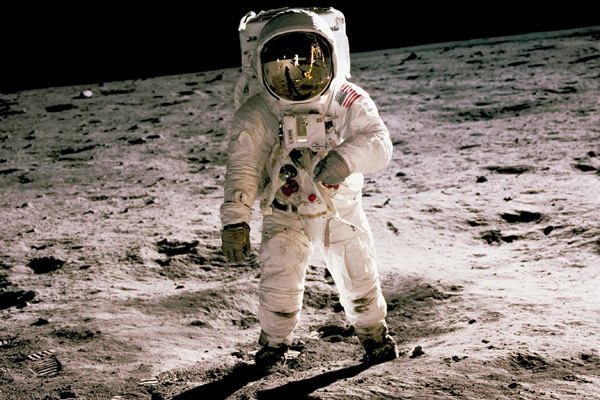Private lunar lander succeeded in landing on the Moon for the first time in human history and more is coming

[Astronaut on the Moon. Photo Credit to Unsplash]
Falcon, a SpaceX rocket, blasted off from NASA’s Kennedy Space Center and dispatched Odysseus, a lunar lander developed by Intuitive Machines and supported by NASA, on February 15, 2024.
Odysseus, the first lunar lander from a U.S. company, achieved a historic moon landing in human history since Apollo 17.
NASA’s ‘Intuitive Machine 1’ mission aims to send NOVA-C lander, also known as Odysseus, to Malapert A, a crater located in the south pole of the moon.
Odysseus will transport five NASA payloads and other commercial cargo to the lunar surface.
The scientific goals of NASA’s ‘Intuitive Machine 1’ mission include researching Plume-surface interaction, radio astronomy, and space weather interactions with the lunar surface.
NASA also plans to develop precision landing technologies to the surface of the moon, communication, and space navigating capabilities.
‘Intuitive Machine 1’ mission is part of NASA’s Commercial Lunar Payload Services(CLPS) initiatives, where NASA contracts commercial partners to provide launch and lander services.
As part of a long-term mission to facilitate research about the moon, American companies under CLPS will be responsible for delivering science payloads and performing all necessary operations for lunar missions.
NASA selected nine American companies, including Lockheed Martin Space and Intuitive Machines, for CLPS in 2018 and added five more, including SpaceX (an affiliate of well-known electric car company Tesla), in 2019.
Currently, fourteen U.S. companies contribute to NASA’s lunar economy and will help NASA prepare for the next generation exploration to space.
Furthermore, CLPS is not a one-time project aimed solely at sending research payloads to the Moon; instead, it is intricately connected to the huge space development mission of NASA, Artemis.
The Artemis mission is a big project to establish permanent human presence on the Moon and eventually send the first person to Mars.
With Artemis, America can build upon 50 years of exploration experience to reignite its passion for discovery, which waned since the Apollo missions ended.
The Artemis mission can’t be accomplished with the efforts of just one country and government.
It needs international cooperation and participation from lots of commercial companies in diverse industries.
Artemis mission will enable a growing lunar economy by fueling new industries like high tech space farming, supporting job growth, and furthering the demand for a skilled workforce all over the world.
According to NASA, Artemis missions will land the first woman and first person of color on the Moon, using innovative technologies to explore more of the lunar surface than ever before.
NASA will collaborate with commercial and international partners to establish the first long-term presence on the Moon, laying the groundwork for future missions to Mars.

- Carson Seo / Grade 10
- Basis Independent Mclean

![THE HERALD STUDENT REPORTERS [US]](/assets/images/logo_student_us.png)
![THE HERALD STUDENT REPORTERS [Canada]](/assets/images/logo_student_ca.png)
